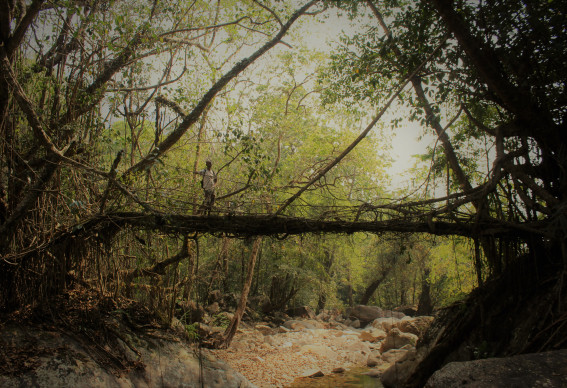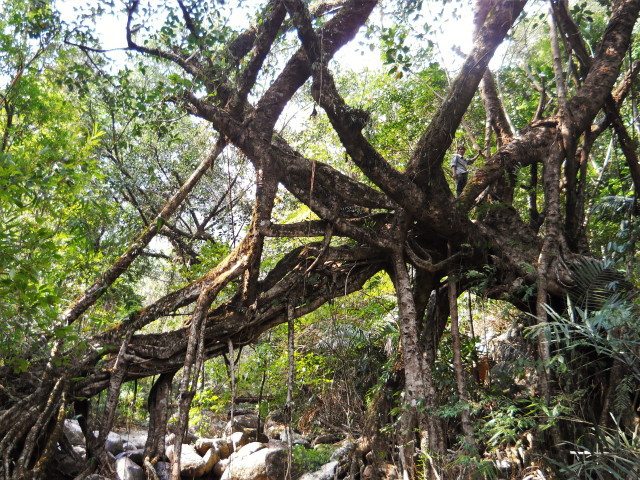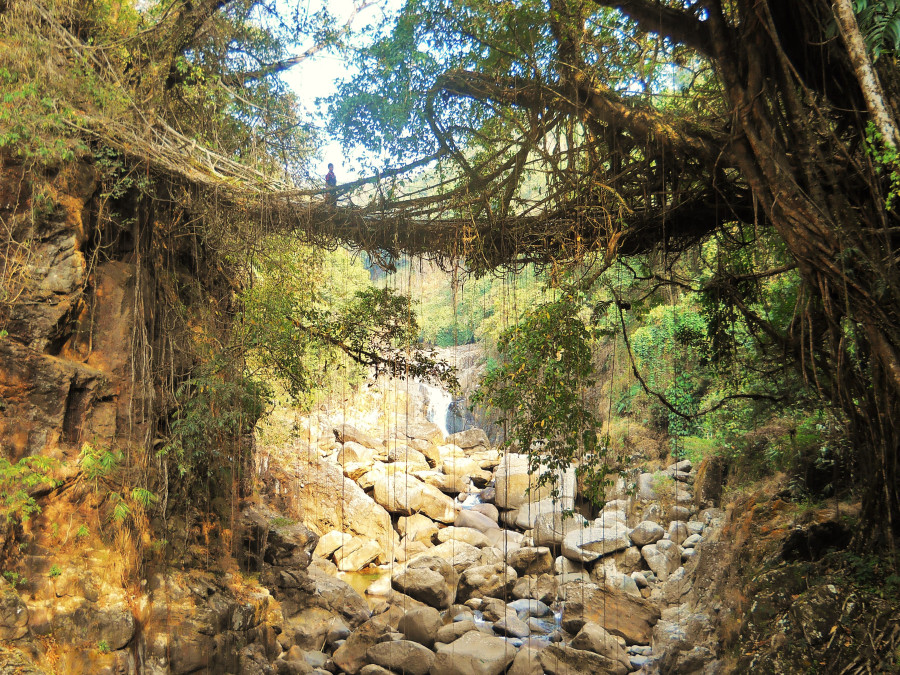In the steep, rain-lashed hills of Northeast India, the inhabitants of isolated villages have devised a practical, beautiful, sustainable, and utterly unique way of crossing monsoon-swelled streams and rivers. Where bridges made from bamboo or wood would rot and be easily swept away, and structures made from steel or concrete would be expensive, requiring outside investment while also rusting quickly and being easily damaged, the villagers opted to create living, self-sustaining bridges from the growing roots of the ficus elastica species of fig tree.
These bridges are some of the world’s most unique architecture. They are practical, but also beautiful; they cost nothing to build, yet can render centuries of effective service; they are ancient, and yet could provide inspiration for dealing with a multitude of 21st century problems. No other form of architecture becomes naturally stronger over time, but as a root bridge is composed of living elements, so long as the tree it is a part of remains healthy, the structure will self-strengthen and continue to do so indefinitely.

It is difficult to overstate the importance of the practice because it occurs at an intersection of functional, historical, cultural, environmental, aesthetic, and scientific interests. When the bridges were first conceived, they were meant to address a simple, practical, issue: isolated villages needed a form of low-cost infrastructure. The living bridges were then a common-sense solution to a very basic problem, where the ingenuity, patience, and foresight of the generation that originally grew them came to benefit the numerous generations which followed. Many bridges, first envisaged centuries ago, are still in everyday usage, a fact which more than demonstrates their long-term practicality. But that they have been around so long also means that they are an indelible part of the history of the area they are found in. They give a new meaning to the term “Living History,” and serve as bridges not only to the other side of a stream, but also to the past. As much of Northeast India’s traditional architecture has entirely disappeared, the living root bridges all the more important as they are clues as to what the Khasi Hills were like centuries ago.
While the living bridges offer a fascinating glimpse into Northeast India’s past, they may simultaneously be the way of the future. At a time when sustainable building methods are becoming more and more important the world over, the living root bridges of Meghalaya are an example of renewable, environmentally beneficial architecture which has been successfully and widely practiced for centuries. They could provide a source of inspiration for engineers and botanists who might wonder how the growing properties of plants could be applied towards the creation of a class of structures which, rather than degrading the natural environment, actively improve it.

Though first grown out of hard-headed necessity, the living bridges are also objects of exquisite beauty, and so are of self-evident aesthetic value. Beyond offering practical inspiration, they may also spur on all manner of artistic endeavors, and, rather like the great Mughal tombs of India or the cathedrals of Europe, may come to be seen as among the great architectural achievements of the human species.
